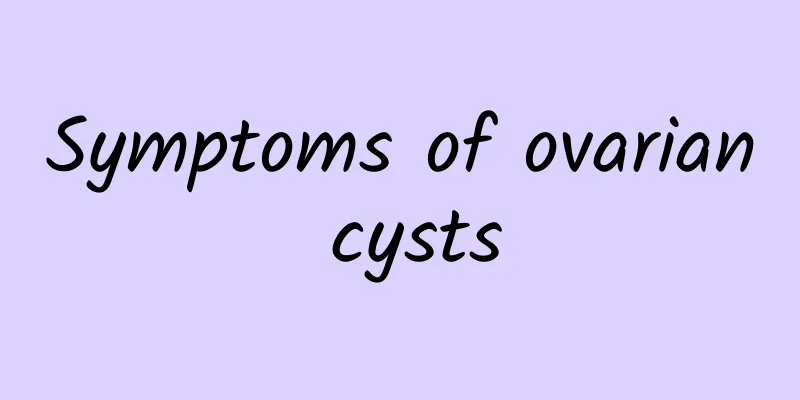Abortion syndrome

|
The first step is to confirm the pregnancy. According to the history of amenorrhea, a positive pregnancy test can generally be diagnosed as pregnancy, but trophoblastic diseases such as ectopic pregnancy and hydatidiform mole must be ruled out. When the B-ultrasound shows a gestational sac in the uterus at 45 days after amenorrhea, it can be confirmed as an intrauterine pregnancy; if there is no gestational sac in the uterus, but there is one outside the uterus, it can be diagnosed as an ectopic pregnancy; if there is no gestational sac in the uterus, but there is a snowflake-like shadow, it can be considered as a hydatidiform mole. Only when it is confirmed that the pregnancy is intrauterine can an abortion be performed. Some rural hospitals have simple conditions and no B-ultrasound facilities. At this time, the scrapings must be carefully examined. Only when the embryo or villi are seen in the scrapings can it be confirmed as an intrauterine pregnancy. If not, the possibility of ectopic pregnancy must be considered. The second step is the operation period. The embryo is removed from the uterus by surgery or drugs, which is the key step. There are many surgical methods. The most commonly used methods are painless abortion, micro-tube painless abortion and visual painless abortion, which are suitable for early pregnancy within 3 months. Especially for those who are pregnant for 1.5 to 2 months. Painless abortion is to put the patient in an anesthetized state, and the operation is over when "waking up". Its advantages are: strong visibility. Since the operation is guided and monitored by visual technology, the doctor can see the situation in the uterine cavity at a glance, and can accurately and quickly remove the gestational sac without damaging normal tissues. The operation can be completed safely in a short time. Effectively avoid the occurrence of complications, effectively avoid the occurrence of complications such as uterine perforation, incomplete uterine suction, leakage, abortion syndrome, etc. caused by tension, fear, restlessness and struggle in traditional abortion, and the operation can be easily completed in a sleeping state. The second is medical abortion. There are two types, one for early pregnancy and the other for late pregnancy. If the medical abortion method for early pregnancy is used for women less than 49 days, there may be heavy bleeding, residual, re-curettage, long time and long bleeding after abortion, so it is not the first choice. Patients with glaucoma and cardiovascular diseases should avoid medical abortion as much as possible. The second is mid-term pregnancy, that is, pregnant women 3-5 months, can use the method of amniotic cavity injection of drugs to make pregnant women produce uterine contractions and expel the fetus. Because sometimes the placenta is not completely expelled, curettage is often required, this point should be noted. The third step is the postoperative recovery period. If this period is not handled properly, it can also lead to serious consequences. Although abortion is a "short confinement period", it should be recuperated in the same way as a full-term birth "long confinement period". Eggs, milk, ribs, chicken, fish and other nutritious and easily digestible foods should be consumed. It is forbidden to wash your hair or bathe with cold water, otherwise the cold water stimulation can induce arthritis, leaving behind pain in the joints and muscles of the affected parts. Pay special attention to hygiene after the operation, change and wash underwear frequently, wash the vulva daily, change and disinfect toilet paper frequently, and those who have not yet cleaned the blood are absolutely prohibited from lavage and sitting bath to avoid ascending infection. Sexual intercourse is prohibited within 4 weeks after the operation. After resuming life, contraception should be adhered to. Complications and treatment If the person performing the artificial abortion strictly abides by the operating procedures, the incidence of complications is very low, and a few people may experience: Uterine bleeding: The amount of bleeding during surgery is usually less than 30ml. If the amount of bleeding is large, in addition to giving uterine contraction drugs, the residual embryonic tissue in the uterine cavity should be quickly removed. Bleeding generally lasts 3 to 4 days after abortion. If the bleeding is similar to menstrual flow and continues, it may be an incomplete abortion or a combined infection, and you should go to the hospital for examination. If the embryonic tissue is not completely removed during the residual pregnancy tissue surgery, it may cause bleeding and lower abdominal pain. Chinese medicine and uterine contraction drugs can be used to promote its expulsion, or even another curettage to clean the uterine cavity. Uterine perforation is extremely rare, and it can be avoided if the surgeon pays attention to it and performs the operation carefully and gently. If it is only a uterine perforation without intra-abdominal bleeding, the patient can be hospitalized for observation, otherwise the perforation should be sutured immediately. Infection If genital inflammation is not controlled before surgery, or if aseptic techniques are not strictly followed during surgery, pelvic infection may occur and anti-infection treatment should be started immediately. Within 3 to 6 months after surgery for menstrual disorders, the menstrual volume may increase and the menstruation may become irregular, but it can usually recover naturally. Intrauterine adhesions occur occasionally. They are usually caused by damage to the cervix and uterine cavity during surgery. They can block the discharge of menstrual blood, causing amenorrhea, cyclical abdominal pain, long-term infertility or repeated miscarriage. The main treatment method is to dilate the cervix and separate the adhesions before inserting an intrauterine contraceptive device to prevent the recurrence of intrauterine adhesions. |
<<: Laboratory tests required for adnexitis
>>: Diagnosis and Differentiation of Ectopic Pregnancy
Recommend
What is the diagnosis method for chronic cervicitis in women? Detailed explanation of the 4 major examination items for chronic cervicitis
I believe that most women know about chronic cerv...
Beware! Causes of ectopic pregnancy in women
What are the causes of ectopic pregnancy in women...
What are the precautions after abortion?
After an abortion, our female friends are relativ...
Will there be pregnancy reactions in ectopic pregnancy?
Ectopic pregnancy, also known as ectopic pregnanc...
What are the causes of recurrent miscarriage? These 4 reasons may be the cause
Repeated miscarriages can cause great harm to wom...
What are the harms of pelvic peritonitis to the body
Diseases like pelvic peritonitis are not unfamili...
Visceral fat can cause you to have diabetes and fatty liver! Can drinking enoki mushroom tea eliminate it? Chinese medicine hawthorn and poria weight loss stick
Are you a "belly worrier" with excess v...
New Taipei City random inspection: Convenience store rice balls contain excessive E. coli
In May, the New Taipei City Government Health Bur...
Causes of irregular menstruation in women after abortion
Some women may experience irregular menstruation ...
Maintaining 3 light lifestyle habits to lose weight is not difficult
Light living includes light food, light body, lig...
What are the causes of vulvar leukoplakia
If you are unfortunately suffering from external ...
No matter how little you eat, you will still be fat! It means you have no idea about calories and basal metabolism
I only eat apples and blanched vegetables for din...
Care for vulvar leukoplakia
Vulvar leukoplakia is a common gynecological dise...
What should I eat more for uterine fibroids? What should I eat for uterine fibroids and anemia?
Uterine fibroids are a common benign tumor in wom...
Atrophic vulvar leukoplakia diagnosis will have different degrees of symptoms
In gynecological clinics, vulvar leukoplakia has ...









